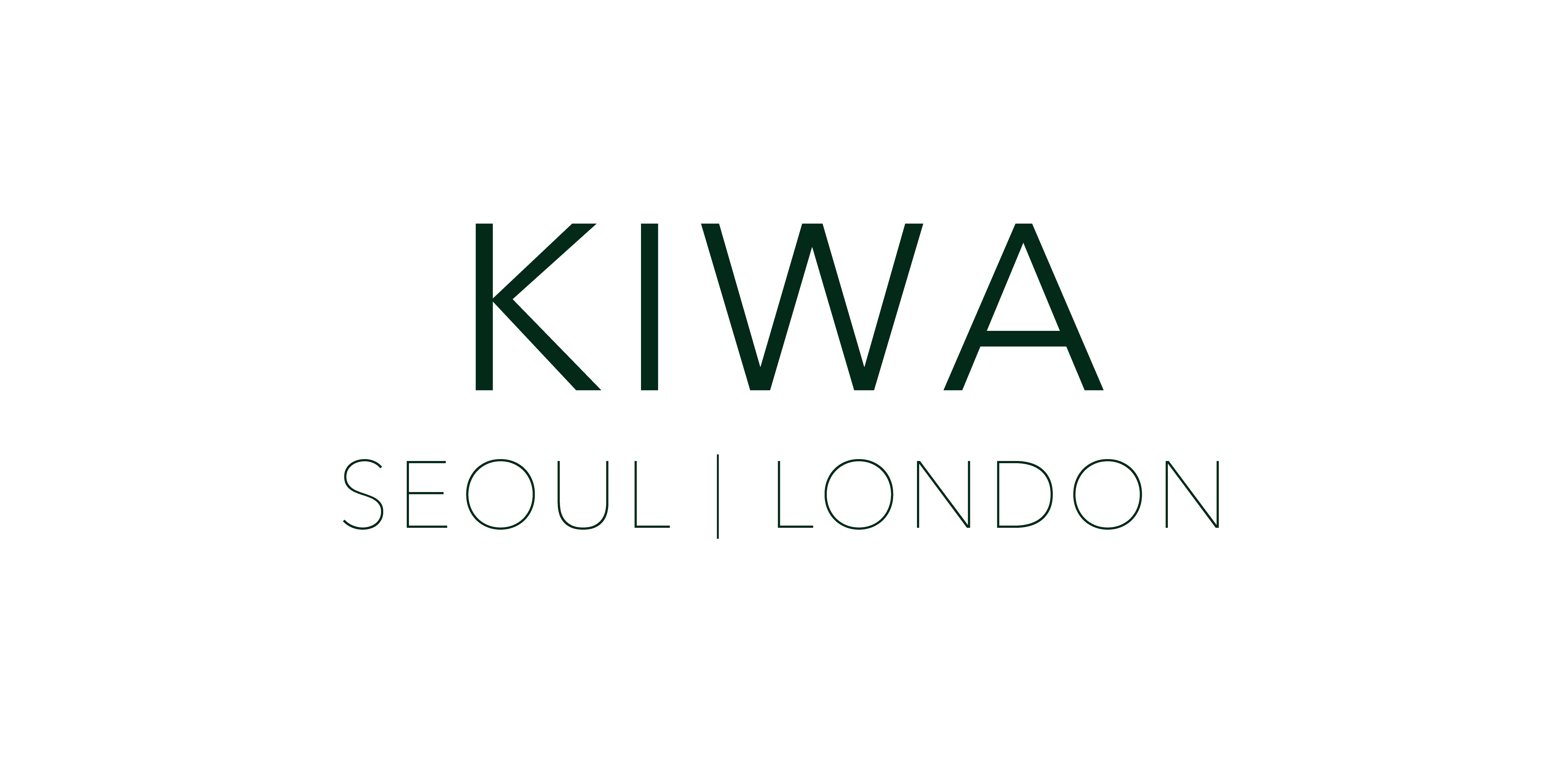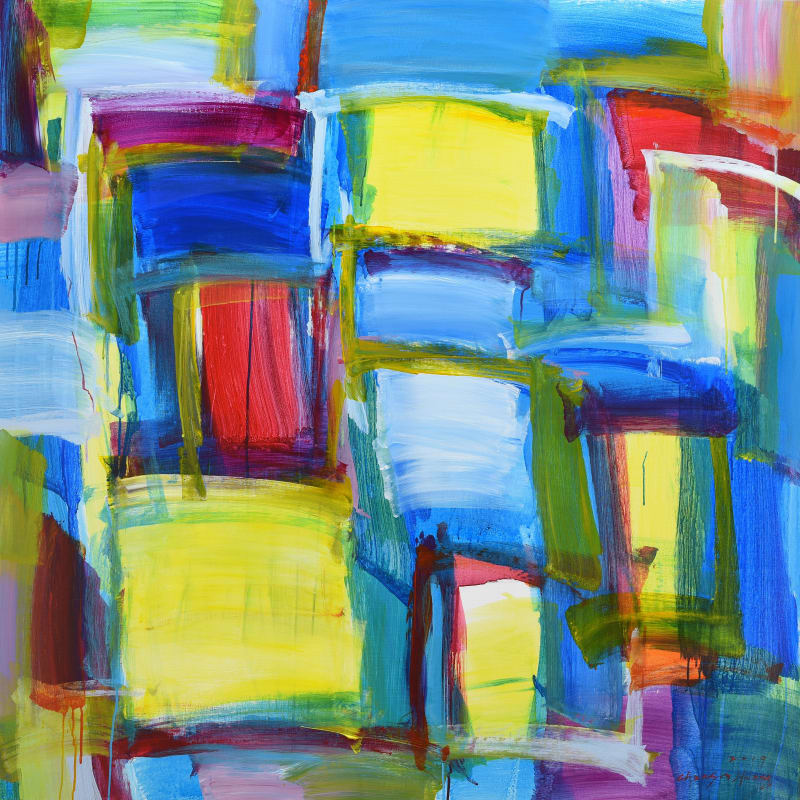The Paintings of Hwang Chan-soo - A Flow of Colors
Choi Seunghoon (Former Director of Daegu Art Museum)
Hwang Chan-soo's paintings are a symphony of colors. Various hues, carried by natural brushstrokes, shift in tone moment by moment and spread across the entire canvas. While his work excludes the illusion of depth created through perspective-common in many abstract paintings-it differs from the flatness emphasized in absolute painting or the color field abstraction of Mark Rothko. The commonality, however, lies in the restraint of many elements that can typically be used in painting. Yet, this restraint does not seem to serve merely as a stylistic choice but rather stems from his inner philosophy. Even when he explores depth through color, it is not just for a visual effect but as an approach on a spiritual level. The way multiple colors blend to form a single tone is visually striking, but beyond that, the precise brushwork performed on the canvas carries a temporal element-akin to a musical performance. In Hwang Chan-su's paintings, a uniform rhythm of colors dances across the entire surface.
For him, painting is not about depicting specific objects or events. Rather, it begins with the spontaneous encounters that spark his creative impulse-the circumstances of a particular moment he experiences. Additionally, since his work is not done on-site but instead created in the studio based on sketches or photographs, his process is purely a reflective act based on memory. This means that his initial emotional response-potentially spontaneous and passionate-is filtered through time and introspection, resulting in a more refined expression.
His paintings embody his psychological responses to the situations he encounters-purely emotional reactions, unfolding like a musical performance driven by an innate sense of harmony.
Hwang Chan-soo rejects rigid "form" itself. He is wary of intentionally constructed formats, as they pose a threat to his artistic freedom. Unlike many contemporary artists, whose themes and styles are distinct and consistent, he has consciously strived to break free from such constraints. Perhaps he resists the conventional attitudes that come with a uniform theme and structure. Or maybe, even when a form emerges naturally, he finds the limitations it imposes on his free thinking too burdensome.
He longs for endless freedom, believing that an artist's work should remain unrestricted. Repetitive themes and formalized structures have always been objects of caution for him. This is why he has never adhered to any particular artistic mold. An anecdote illustrates this well-at one point, when his paintings were highly regarded and he was repeatedly referred to as the "Grass Artist" due to his series of works featuring grass, he deliberately distanced himself from that style and discontinued the series. This reveals his fundamental attitude: he avoids self-promotion, ostentation, or any attempt to stand out. His sole concern is preserving his artistic freedom, and I, too, wish to protect that freedom.
However, from birth, we each have unique natural tendencies. Our tastes, voices, personalities, and attitudes all exhibit distinct characteristics. In this sense, Hwang Chan-su's paintings inevitably bear his unique artistic signature. This is what I call the "Flow" in his paintings-the same kind of flow found in the movement of wind, water, breath, and emotions. This flow is something that can only be perceived through deep sensitivity, not just by sight, but through all senses combined. If we define "Flow" as a fundamental concept that extends to the deepest layers of existence, then it applies precisely to Hwang Chan-su's art, which is not about representing tangible objects or textures.
The challenge in visualizing "Flow" lies in overcoming the constraints of physical space. Since Hwang Chan-soo must inevitably work within a limited space, his paintings present only a segment of that flow-a fragment of time, a portion of space.
This could also be described as "traces of encounters." The specifics of "when" or "where" an encounter took place are insignificant. What matters is that the fragment of flow captured in his work represents not only a memory of the past but also a moment in the present and a possibility for the future. Such an approach does not stem from trivial issues, everyday narratives, or social themes. Instead, it emerges from a broader emotional and universal perspective. His paintings are not about questioning their starting or ending points but rather about accumulating countless encounters over time, forming an endless flow.
Seen in this light, his paintings differ from conventional compositions, where there is a clear distinction between the center and the periphery. Instead, his entire canvas maintains a uniform balance, which is why he does not stretch his canvases onto frames before painting. He attaches raw canvas directly to the wall, allowing his brushstrokes to flow without interruption or hesitation. Immersed in emotion, he performs a symphony of colors through brush movements. Only when this performance is complete does he mount the canvas onto a frame, revealing just a fragment of the larger flow.
For this exhibition, I refer to his paintings as "Flow Paintings." Of course, Hwang Chan-soo will likely distance himself from this label, just as he has always done, moving further into an unseen realm beyond any imposed definitions. However, one thing is certain: just as his artistic philosophy has shaped him until now, it will continue to define him in the future.

